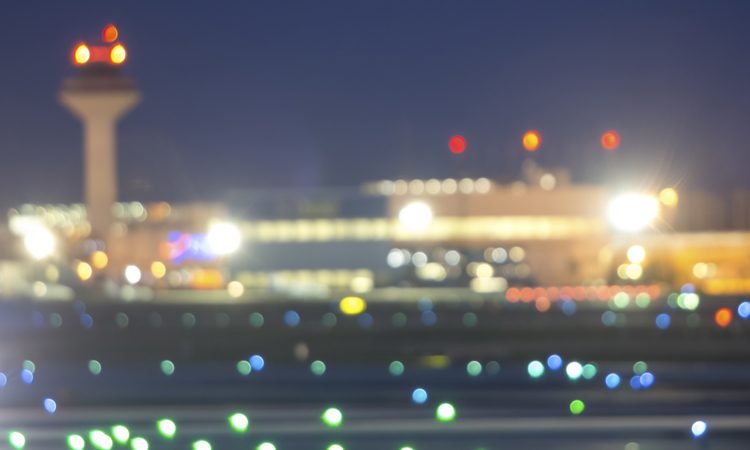Merging technology helps airports reach the sky
- Like
- Digg
- Del
- Tumblr
- VKontakte
- Buffer
- Love This
- Odnoklassniki
- Meneame
- Blogger
- Amazon
- Yahoo Mail
- Gmail
- AOL
- Newsvine
- HackerNews
- Evernote
- MySpace
- Mail.ru
- Viadeo
- Line
- Comments
- Yummly
- SMS
- Viber
- Telegram
- Subscribe
- Skype
- Facebook Messenger
- Kakao
- LiveJournal
- Yammer
- Edgar
- Fintel
- Mix
- Instapaper
- Copy Link
Posted: 3 June 2019 | Veovo | No comments yet
Shorter queues, predicted wait times and more efficient processing really can make for a seamless, pleasant and memorable airport experience.


Air traveller numbers are growing globally, presenting some unique challenges, beyond merely making sure airports are large enough to accommodate them. Technology offers some exciting solutions, like sensors and cameras, to understand passenger volume and flow. However, selecting the right solution can be challenging, as no single technology can meet all measurement requirements.
An airport’s existing environment must be considered when choosing a system that both meets current needs and is easily scalable for future demands. Technology can be costly to install, and there is a direct correlation between numbers, cost and lead-time. Therefore, minimising installations while maintaining high accuracy is crucial.
Making the right choice
It is essential to start with the desired outcome, rather than the technology, or the accuracy of the data it promises to deliver. For example, an airport could strive to provide wait time information to passengers, or better match capacity with demand at the right times. Once the desired outcomes have been identified, the next step is to define what data is needed to achieve them. While cost and efficiency considerations cannot be ignored, it is important to clarify the levels of accuracy required to make the right decisions.
In identifying challenges and outcomes, it is also critical to understand both the individual, isolated airport processes and to get clarity on their interdependence. It can be tempting to focus on a single pinch point, such as check-in, security or border control, without understanding its effect on others, or how it, in turn, is affected.
Experience, however, tells us that knowledge about one process will lead to another, and eventually flow between all the processes. With an airport-wide understanding of flow patterns, it is easier to focus on the right challenges and to more effectively improve all operations. It is therefore essential to choose a solution that supports the analysis of flows, rather than just single-process queue management.
A global trend
There are many emerging passenger flow technologies available, from mobile device tracking to camera-based solutions. According to SITA, 77 per cent of airports will have business intelligence initiatives for queue management by the end of 2019. The question is: Which technology is the most effective for the issues that need to be solved?
Camera and Wi-Fi/Bluetooth sensor
New 3D-camera solutions provide an unparalleled level of accuracy for people-counting and dwell-time statistics, offering a detailed picture of wait times per processing point. However, cameras are unsuitable for measuring how people move through multiple processes, as they struggle with gaps in coverage and are easily influenced by changing environmental conditions like lighting and physical obstacles.
Wi-Fi/BLE/Bluetooth sensor solutions are ideal for measuring airport-wide flow, queue and dwell time through multiple processing points by detecting passengers’ mobile devices. They are, however, unsuitable for people-counting. The combination of the requirements to the data and the physical environment will point towards a given solution. Often a combination of technologies is the most accurate and cost-effective solution. Choosing a sensor agnostic solution will allow for use of the best data-acquisition technologies on the market.
Adopting the tech
In 2018, the Port Authority of New York and New Jersey (PANYNJ) adopted the Veovo Passenger Predictability queue management solution, which combines multiple sensors, to measure and display wait times at TSA security checkpoint and taxi stands at JFK, Newark, LaGuardia and Stewart Airports. The goal was two-fold: First, to provide accurate wait time information to manage passenger expectations; second to enable the airports to develop strategies and to target resources to reduce wait times.
“With this real-time data posted on each of the airport’s websites and screens at the terminals, wait times are now readily available to help reduce passenger stress and enable travellers to plan based on the wait times they will encounter,” said Port Authority Executive Director, Rick Cotton.
A couple of years earlier, Cincinnati/Northern Kentucky International Airport (CVG) had turned to the same solution, to help reduce frustration and complaints resulting from people’s inaccurate perception of time.
“Much of our interest in the public display of wait times was to dispel perception from reality. As the adage goes, ask five people what their actual wait time was, and you’ll get five different answers. Following deployment, complaints are now rare, as the passenger immediately understands the present situation and adapts,” said Brian Cobb, Vice President of Customer Experience at CVG Airport.
Not only have CVG reduced complaints, but they’ve also been able to use the collected data to recommend TSA staffing adjustments, resulting in a reduction in processing times by one-third.
The best of all worlds
Taking an approach that supports and utilises data from several sources, maximising the advantages of independent technologies and their strengths, provides a solution that is economically viable and scalable, delivering the desired outcome. The airport will be more adaptable when adjusting to variable ceiling heights, lighting conditions, expansions and so on, which means fewer redundant installations, and reduced costs.
Creating a low-stress, predictable experience for passengers will always play in the airport’s favour. Shorter queues, predicted wait times and more efficient processing really can make for a seamless, pleasant and memorable airport experience.
Related topics
Airport development, Capacity, Passenger experience and seamless travel, Terminal operations


















